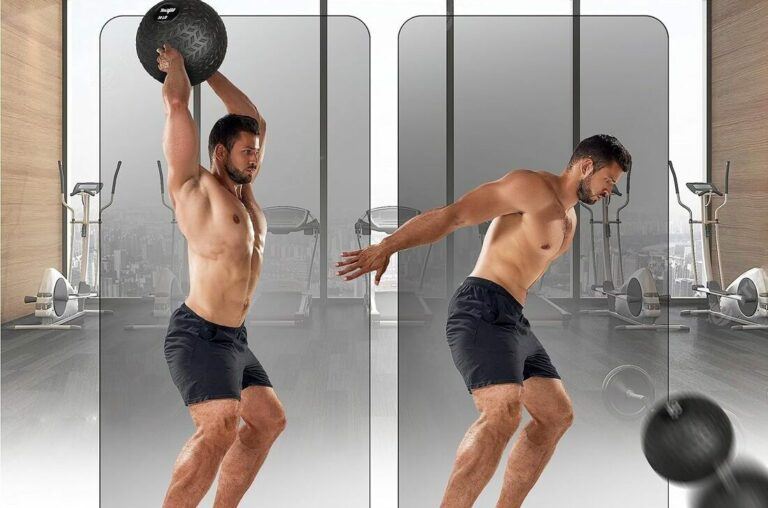Pushing your limits is a crucial part of athletic development.
You’ve incorporated reflexive strength training into your routine, ready to unlock lightning-fast reactions and explosive power.
But here’s the million-dollar question: are you prioritizing recovery just as much as your workouts?

Reflexive training, while incredibly beneficial, can be demanding on your body.
It challenges your nervous system, pushes muscles to their limits, and requires precise coordination.
Without proper recovery, this intense training can lead to injuries, plateaus in progress, and ultimately, hinder your athletic goals.
This blog dives deep into the importance of recovery after reflexive training.
We’ll explore effective techniques to support your body’s natural healing process, maximize your gains, and minimize the risk of injuries.
By prioritizing recovery, you can ensure your body is primed for peak performance, session after session.
Target Audience: This blog caters to athletes (both beginners and experienced), fitness enthusiasts, and anyone involved in reflexive strength training.
We’ll provide practical recovery strategies designed to accelerate recuperation, enhance performance, and prevent injuries.
Why Recovery Matters: Beyond Just “Resting Up”
Recovery isn’t just about taking a break after a tough workout. It’s an active process that allows your body to:
- Repair Muscle Tissue: Exercise, including reflexive training, creates microscopic tears in muscle fibers. Recovery allows these tears to rebuild stronger, leading to increased strength and power.
- Replenish Energy Stores: Reflexive drills rely on readily available energy sources like glycogen. Proper recovery helps replenish these stores, ensuring optimal performance during your next workout.
- Sharpen Your Nervous System: Reflexive training stimulates the nervous system. During recovery, the nervous system refines these pathways, leading to faster reactions and improved coordination.
- Reduce Injury Risk: Overtraining your muscles and nervous system can lead to fatigue and increased susceptibility to injuries. Proper recovery allows your body to rebuild and resist injuries.
By focusing on recovery, you’re not just giving your body a break; you’re actively laying the foundation for future gains and improved athletic performance.
Recovery Strategies: Your Toolbox for Peak Performance

Now that we understand the importance of recovery, let’s explore some key strategies to optimize the process:
1. Post-Workout Cooldown and Stretching: Perform a light 5-10 minute cooldown after your reflexive training session to gradually bring your heart rate down and relax your muscles. This is followed by static stretching (holding each stretch for 15-30 seconds) to improve flexibility and reduce muscle soreness.
2. Prioritize Sleep: Aim for 7-8 hours of quality sleep each night. Sleep is essential for muscle repair, nervous system re-calibration, and overall body restoration.
3. Proper Nutrition: Consume a balanced and nutritious post-workout meal rich in protein and carbohydrates. Protein aids muscle repair, while carbohydrates replenish glycogen stores.
4. Hydration: Stay hydrated throughout the day, but especially after workouts. Aim for at least 16-20 ounces of water 2-3 hours after your training session to rehydrate and support recovery.
5. Active Recovery: Light activities like walking, swimming, or yoga on rest days can promote blood flow, support recovery, and prevent stiffness without stressing your muscles.
6. Foam Rolling or Massage: Consider foam rolling or self-massage techniques to improve circulation, reduce muscle tension, and promote faster recovery.
7. Listen to Your Body: Don’t be afraid to adjust your training intensity or take rest days when your body needs them. Pushing through pain can lead to overtraining and injuries.
8. Consider Recovery Aids: Consult a doctor or sports nutritionist about supplements like protein powder, creatine, or tart cherry juice, which may support muscle recovery (Note: This is not a substitute for a balanced diet).
By incorporating these techniques into your routine, you can significantly enhance your recovery process, maximize the benefits of reflexive training, and minimize the risk of injuries.
Optimizing Your Recovery: Tailoring Strategies to Your Needs
Here’s a table outlining how you can tailor your recovery plan based on the intensity and duration of your reflexive training session:
| Training Intensity & Duration | Recovery Strategies |
|---|---|
| Low Intensity (30-45 Minutes): | Light cooldown & stretching Proper post-workout meal Adequate hydration |
| Moderate Intensity (45-60 Minutes): | Cooldown & stretching Protein-rich post-workout meal Consider active recovery on rest day |
| High Intensity (60+ Minutes): | Extended cooldown & stretching Balanced post-workout meal with emphasis on protein Active recovery or rest day Consider foam rolling or massage |
Frequently Asked Questions: Recovery Champions Assemble!

Here are some commonly asked questions regarding recovery after reflexive training:
How long should I rest between reflexive training sessions?
Rest days are crucial for recovery. Generally, aim for at least 48 hours of rest for the same muscle groups involved in your reflexive training. You can train more frequently if targeting different muscle groups and prioritizing active recovery on rest days.
What are some signs of overtraining?
Signs of overtraining can include:
- Decreased performance
- Increased muscle soreness
- Difficulty sleeping
- Mood swings
- Increased susceptibility to injuries
If you experience any of these, scale back your training intensity, increase rest days, and prioritize recovery.
Do I need to stretch every day?
Aim for static stretching 2-3 times per week, focusing on the muscle groups used during your reflexive training sessions. Stretching can also be incorporated as part of your cooldown routine.
What are some good protein sources for muscle recovery?
Excellent post-workout protein sources include:
- Chicken breast
- Fish
- Eggs
- Greek yogurt
- Beans and lentils (vegetarian option)
- Protein powder (consult a registered dietitian for guidance)
Are there any recovery tools I should consider?
While a balanced diet and proper sleep are the foundation of recovery, some tools may be beneficial:
- Foam roller: Helps improve circulation and reduce muscle tension.
- Massage gun: Similar to foam rolling, but may offer deeper tissue massage. (Consult a doctor before using a massage gun)
- Compression garments: May promote blood flow and reduce soreness after intense workouts.
Remember, these are just general recommendations.
Consult a healthcare professional or a sports nutritionist for personalized advice on optimizing your recovery based on your specific needs and training goals.
Conclusion: Recovery, the Unsung Hero of Reflexive Training
Reflexive strength training is a powerful tool for athletes seeking to elevate their performance.
However, neglecting recovery can hinder progress and increase the risk of injuries.
By prioritizing sleep, proper nutrition, and incorporating effective recovery strategies, you can transform yourself into a recovery champion.
Remember, a well-rested and rejuvenated body is a stronger, faster, and more resilient body. So, listen to your body, prioritize recovery, and watch your athletic performance soar!
This blog post complements our previous guide on the importance of reflexes for athletes by providing actionable strategies for advanced reflex training used by elite athletes.
Citations
Citation 1:
- Title: The Biochemical Basis of Sports Performance
- Authors: Michael Gleeson and Ron J. Maughan
- Link: The Biochemical Basis of Sports Performance
Citation 2:
- Title: Effects of Sleep Extension on the Athletic Performance of Collegiate Basketball Players
- Authors: Cheri D. Mah, Kenneth E. Mah, Eric J. Kezirian, William C. Dement
- Link: Effects of Sleep Extension on the Athletic Performance of Collegiate Basketball Players



